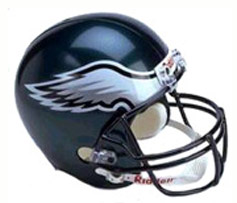For example, T-tails are notorious for deep stalls, even straight ahead. What advantages do they have?
I have often wondered that myself.
For example, T-tails are notorious for deep stalls, even straight ahead. What advantages do they have?




So, how do you design a plane to ensure it returns to flight from a stalled state?



T-tails, and spins.. Now THERE'S something to talk about :P
You can even talk to the same "expert" on different days of the week and get different answers on those subjects.
We had a Tomahawk and a Skipper in the club at the same time and I've flown (and spun) both. Just as a quick reference between the two: They're both very easy to spin, but the Skipper recovers quicker/easier. The Tomahawk had a nasty habbit of jumping right into a spin IN THE OPPOSITE direction :o
Two things come up when you're talking about T-tails and I'm not sure if they're advantages or not (in the big, aerodynamic give/take). One, they're never in the prop-wash. Two, they're never in the wing's wake. The very thing that makes wings happier in ground-effect, can make a horizontal stabilizer unhappy. A T-tail's elevator can also feel "un-effective" at low speed (especially approach)... which can lead to over-controling, if you're not used to it. Take a look at the rear tie-down hook, next time you see a Tomahawk on the ramp ;)
The T-tail itself isn't why the "Traumahawk" is a notorious spinner, as much as the constant-chord, "less than rigid" wings are. I've never flown, or talked to some who has, over even heard, that a T-tailed Piper Arrow is a spinner. Have any of you ?




I enjoyed flying the Tomahawk, though... very docile, in general. And the visibilty is better than in any typical flight-school or rental aircraft I've ever flown.

Canards help, too, even more so than washout, because the canard is set at a higher A of A than the main wing, so it stalls first, causing the nose to drop which brings the wing back into the correct angle range before it can stall.

Well, once it's fully stalled, a change in geometry is required (something has to move so the nose will come down).
What happens in a turn made by ailerons alone,


I'm not sure that's necessarily true. In my experience with conventional types (both powered & gliders - full-sized & models) the stall is a series of cycles with the nose dropping then recovering as airspeed increases naturally without moving the controls. The first stall might be very gentle but if recovery action is not taken it will get progressively steeper, eventually becoming quite violent (depending on the design) & possibly dropping a wing converting the stall into a spin.

Ah. So the conventional planes are dynamically unstable in pitch? A pitch-up would be followed by return to pitch-down and then, instead of damping-down, successively weaker pitch-ups, successively more violent pitch-ups and pitch-downs follow?


I'm not sure that's necessarily true. In my experience with conventional types (both powered & gliders - full-sized & models) the stall is a series of cycles with the nose dropping then recovering as airspeed increases naturally without moving the controls. The first stall might be very gentle but if recovery action is not taken it will get progressively steeper, eventually becoming quite violent (depending on the design) & possibly dropping a wing converting the stall into a spin.
 ), and of course, even at a very low entry speed, a stall is a stall and you sure don't want to stall close to the ground.
), and of course, even at a very low entry speed, a stall is a stall and you sure don't want to stall close to the ground.


Oh man.. Aren't they blast ? I love flying a Tomahawk.. It just feels more like you're flying a plane (to me). Great cabin space.. GREAT visibilty.. and what FUN they are to land in a X-wind..
Only problem *sigh*.. I weigh 220lbs.. Even If my flying companion is a mere 170.. we aren't going very far...


I've been advised more than once by instructors that leaving it alone for at least one stall/recovery cycle is often the best thing to do, particularly in a situation where you've blundered into IMC and somehow stalled... might want to use rudder slightly to keep the ball centered, but there seems to be a precedent for people screwing things up by using the elevator too much and/or banking inadvertantly in that scenario ("witnesses saw the plane exit the bottom of a cloud in a dive, then pull up back into the cloud steeply"or "plane exited cloud in a spin...")
In normal flight, best policy is: don't let it stall.


Indeed. That's why I always thought stalling & spinning should be part of the PPL syllabus - before a student is allowed solo - as it was in my day.


Users browsing this forum: No registered users and 251 guests